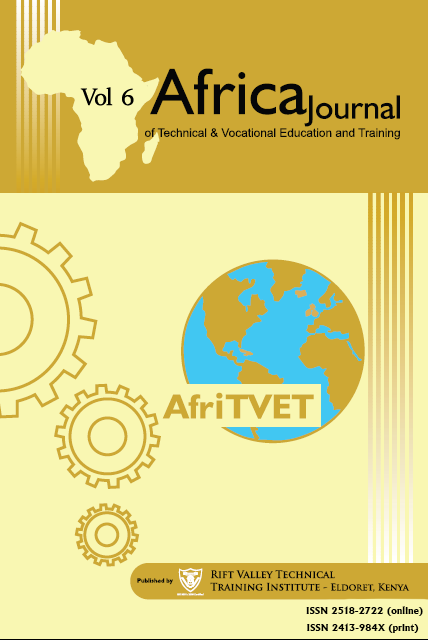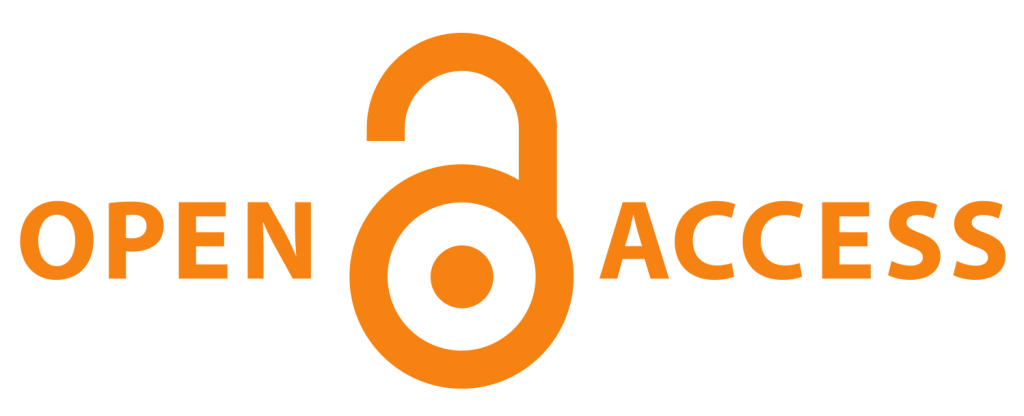Changing Strategies in Student Recruitment among Selected TVE T Institutions in Machakos County, Kenya
Abstract
The purpose of this paper was to investigate the changing strategies in student recruitment among public middle-level institutions in Kenya, specifically the case of TVET institutions in Machakos County. The study was guided by the following objectives, to: (a) Establish the strategies adopted by the TVET institutions in marketing and recruiting students; (b) Determine the capacity of the TVET institutions in marketing and student recruitment ( c) Find out the extent of the area TVET institutions recruit students from, and ( d) Investigate other creative strategies used by the TVET in marketing and student recruitment. World over, a more knowledge-based economy is the norm; in that regard, there is a huge demand for the youth to join college for the acquisition of the desired skills. Therefore the colleges are scrambling for student recruitment in a very limited market. A standardized questionnaire was used to collect data from 15 respondents. The study made the following findings: TVET institutions in rural areas must aggressively adopt more effective and professional strategies for student recruitment. For example, hiring professional marketers, usage of websites for general information to the public, taking advantage of the social media platforms like Facebook, Instagram, Whatsapp, and Twitter to advertise their courses and colleges; branding themselves as a marketing strategy; adopting ICT to reach the youth for faster and wider coverage, and taking advantage of the vernacular FM radios for contextualized messages in the local communities. Finally, the study established that marketers have to be more creative, flexible, and innovative in their strategies, for example, using all existing avenues as marketing opportunities: sports day, festivals, and face to face contact with potential students. The study concluded that successful student recruitment requires aggressiveness, customer-focused and centrality, adoption of effective marketing strategies, and increased visibility in the society.
Article Views and Downloands Counter
References
Davis, S., & Floyd, M. H. (2005). The Channeling of student competition in higher education: comparing Canada and the U.S. The Journal of Higher Education Vol. 76, No. J pp. 89-106.Taylor & Francis, Ltd.
Pringle, J., & Fritz, S. (2018). The University brand and social media: using data analytics to assess brand authenticity, Journal of Marketing for Higher
Education, DOI: 10.1080/08841241.2018.1486345
Mehran, R., & Fathollahzadeh, Z. (2018) The impact of entrepreneurial marketing on innovative marketing performance in small- and medium-sized companies. Journal ofStrategic Marketing, DOI: 10.1080/0965254X.2018.1488762
Palmer, S. (2013). Characterization of the use of Twitter by Australian universities. Journal ofHigher Education Policy and Management,35(4), 333-344.
Peruta, A., & Shields, A. B. (2017). Social media in higher education: Understanding how colleges and universities use Facebook. Journal of Marketing for Higher Education,27(1), 131-143. doi: 10.1080/08841241.2016.1212451
PwC. (2018). The 2018 university- making the right choices, making it happen www.pwc.co.uk/2018university
Queen's University. (2017). Quick Facts. Retrieved from http://www.queensu.ca/about/quickfacts
Reijonen, H. (2010). Do all SMEs practice the same kind of marketing? Journal of Small Business and Enterprise Development, 17(2), 279-293.
Rust, V., & Kim, S. (2012). The global competition in higher education. 10.7459/wse/13.1.02.
Silva, C. (2017). Research Design - The New Perspective of Research Methodology. British Journal of Education, Society & Behavioural Science, 19 (2), 1-12. ISSN: 2278 0998, DOI: 10.9734/BJESBS/2017/30274.
University of Toronto. (2017). Quick Facts Retrived from https://www.utoronto.ca/about-u-of- t/quick-facts. Accessed on 17th July 2018
Wachiye, H & Nasongo, J. (2009). Equity and access to university education through higher loans in Bungoma district Kenya. Educational Research and Reviews. 4.
Copyright (c) 2021 Africa Journal of Technical and Vocational Education and Training

This work is licensed under a Creative Commons Attribution-NonCommercial-ShareAlike 4.0 International License.
Copyright Notice Copyright of published articles is held by AfriTVET. No limitation will be placed on the personal freedom of authors to copy or to use in subsequent work, material contained in their papers. Please contact the Publisher for clarification if you are unsure of the use of copyright material. Apart from fair dealing for the purposes of research and private study, or criticism and or review, this publication may only be reproduced, stored or transmitted, in any form or by any means, with the prior permission in writing of the Publishers.


